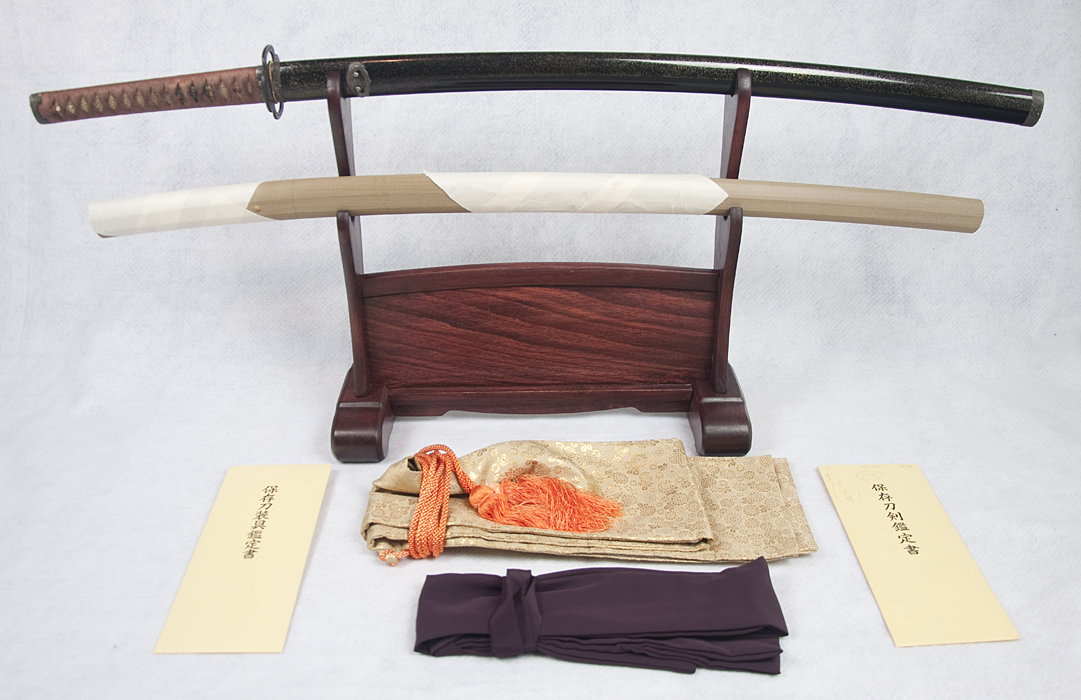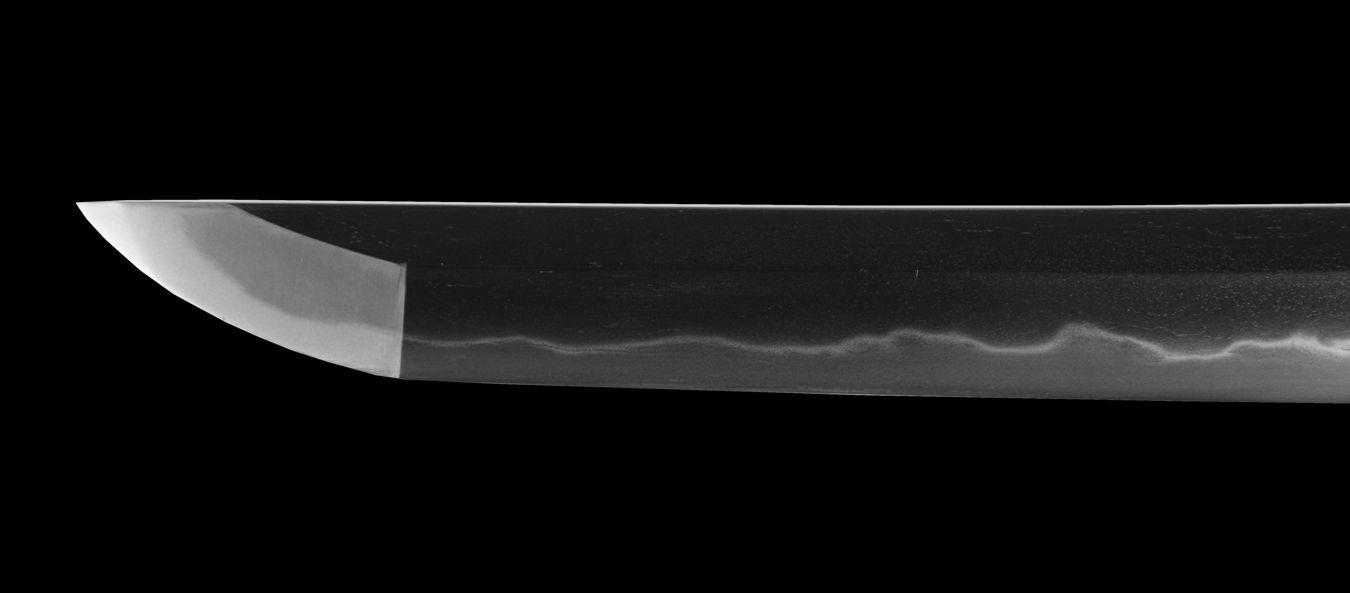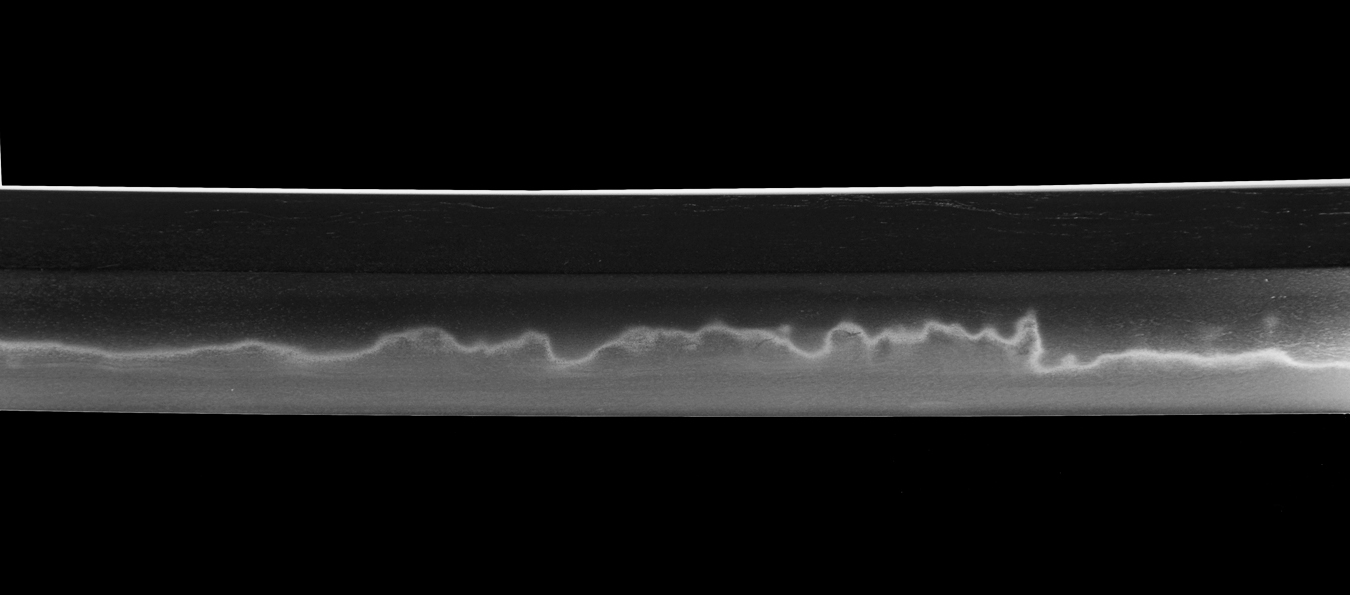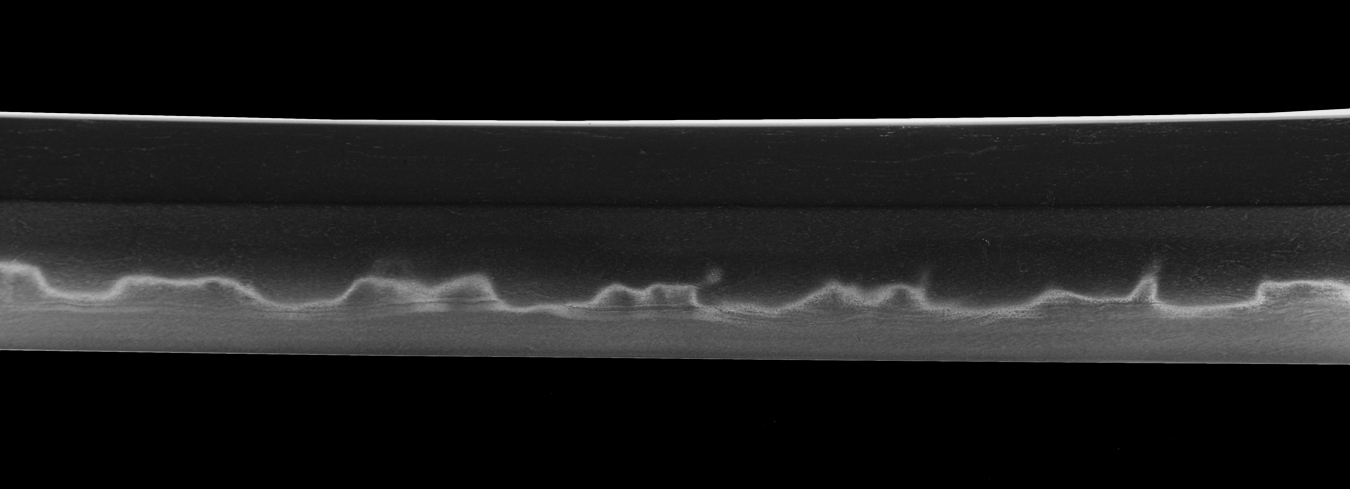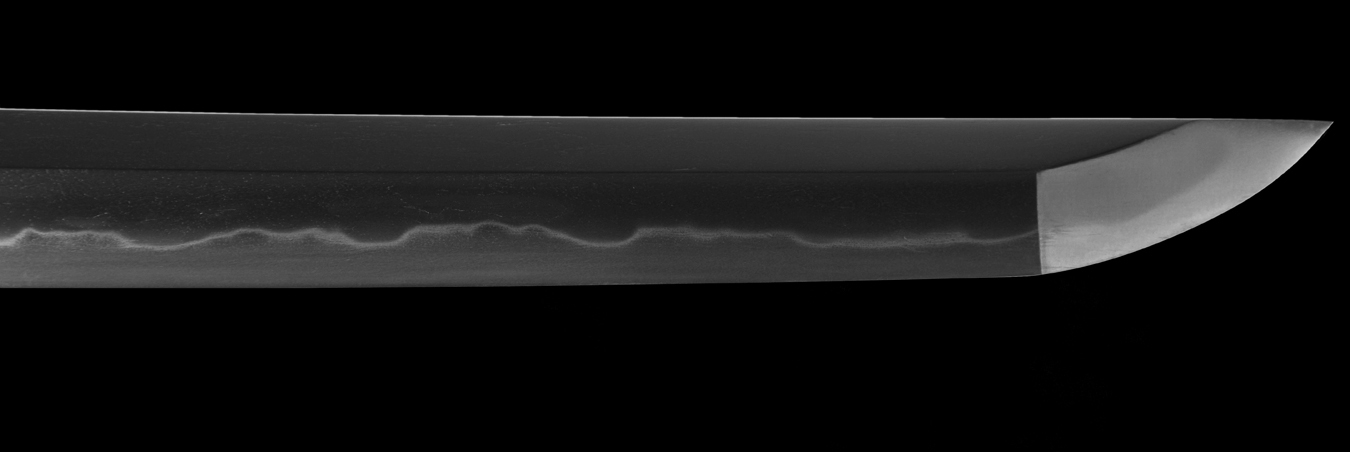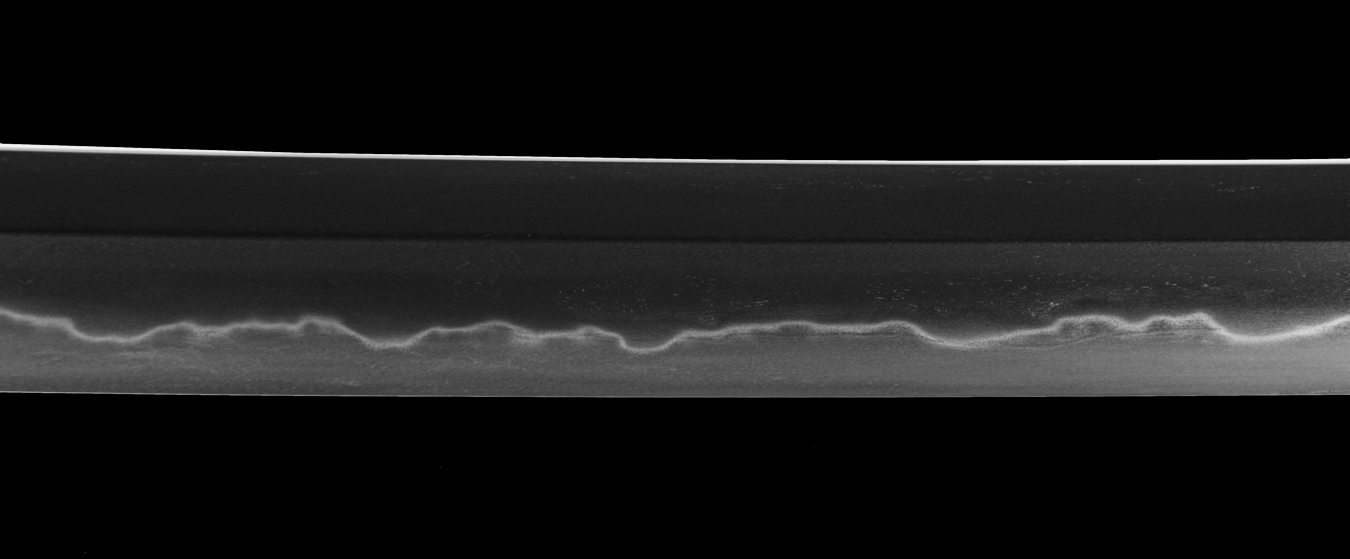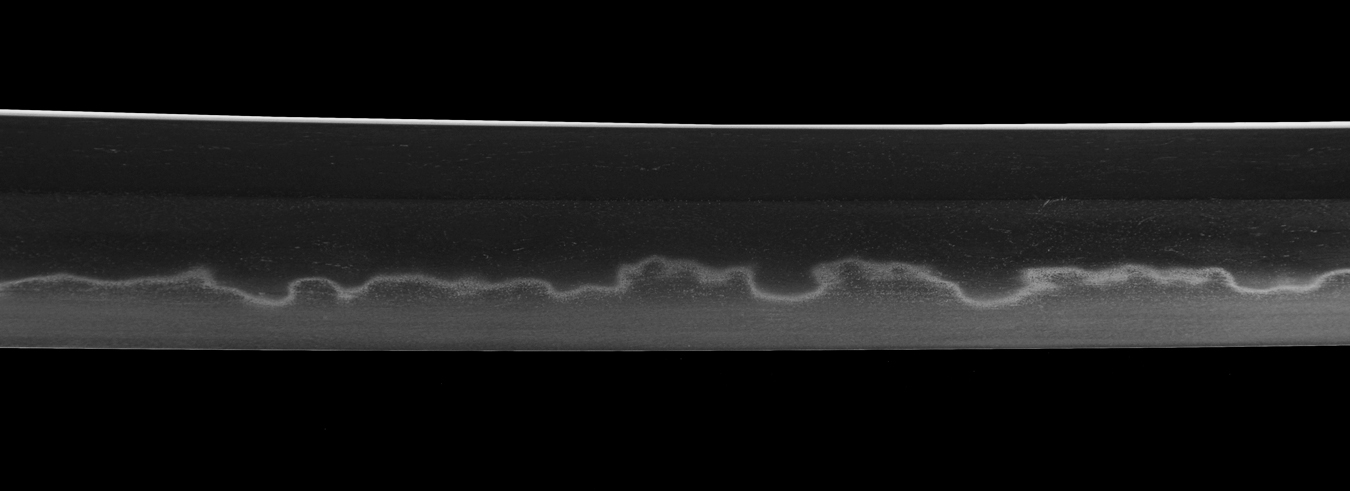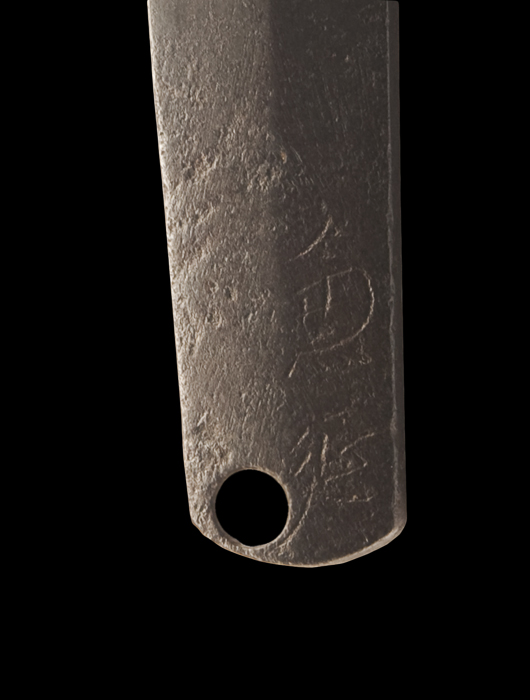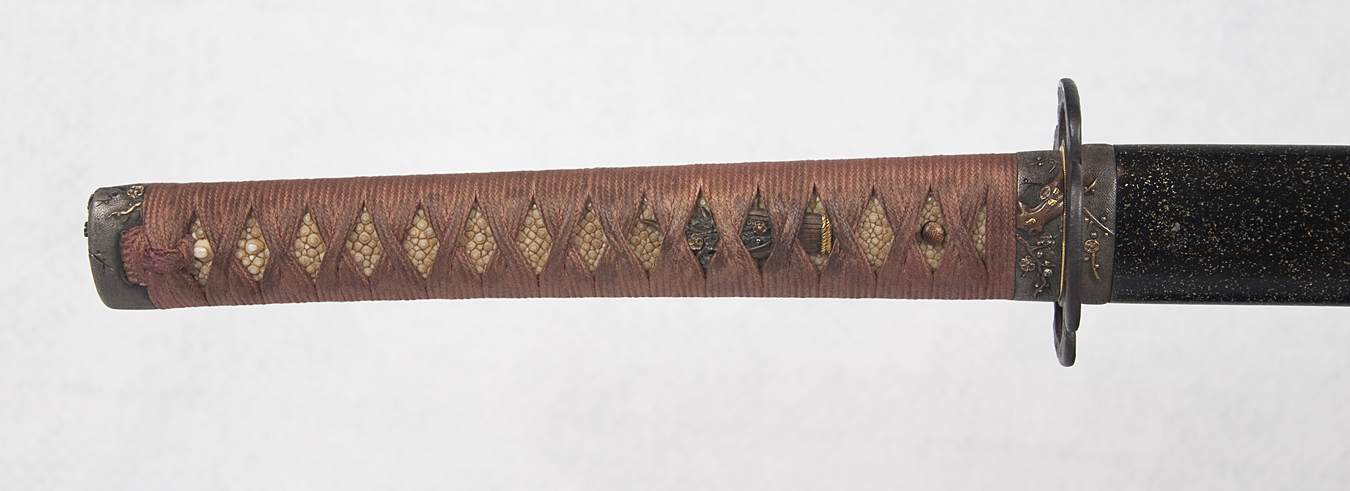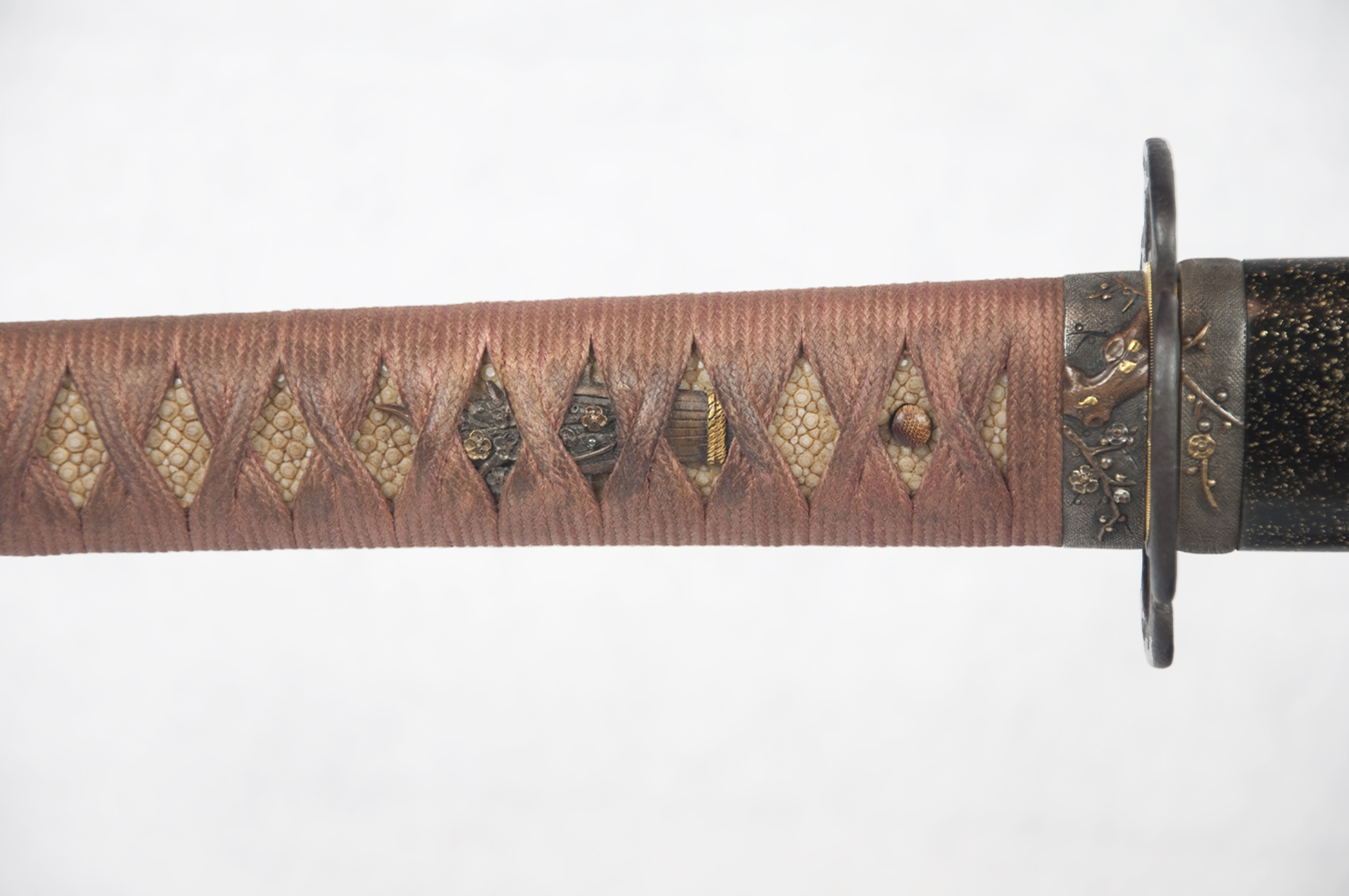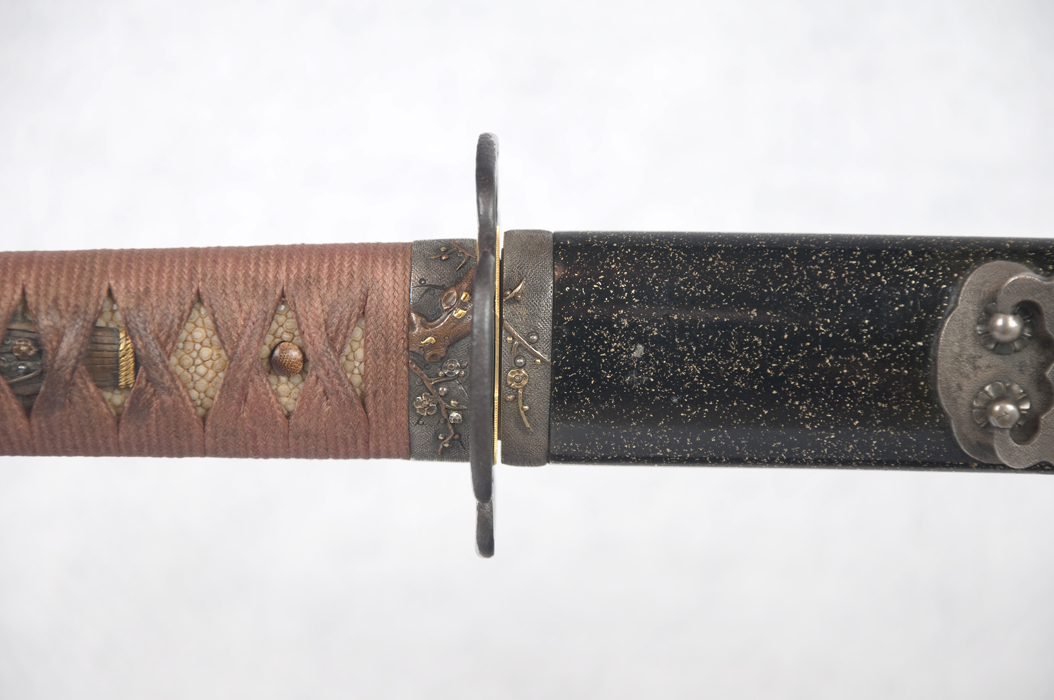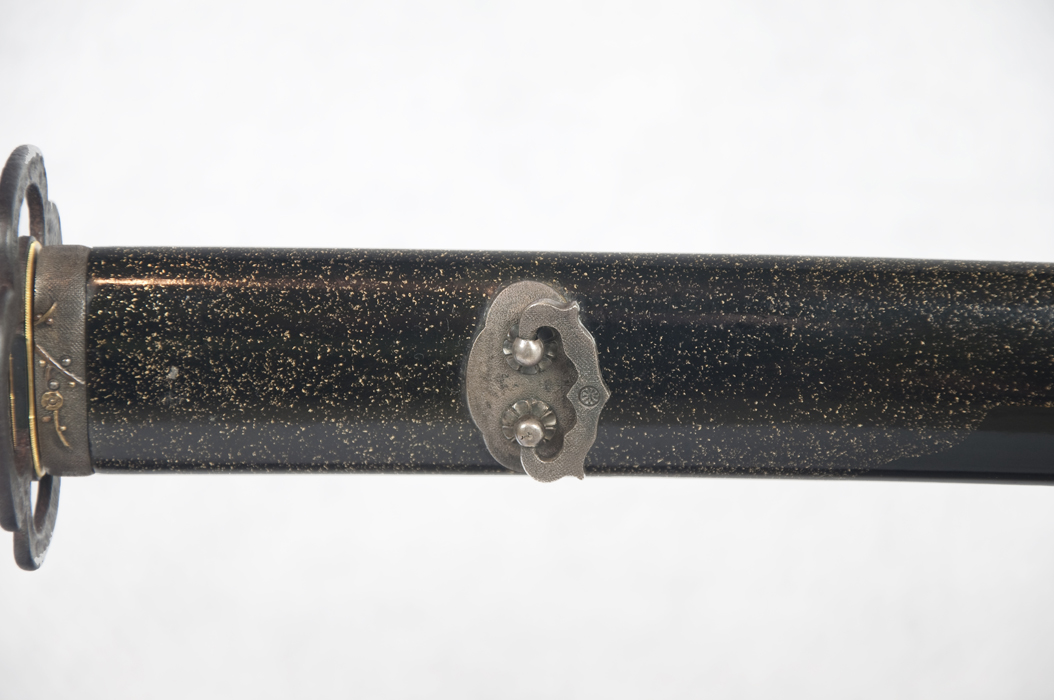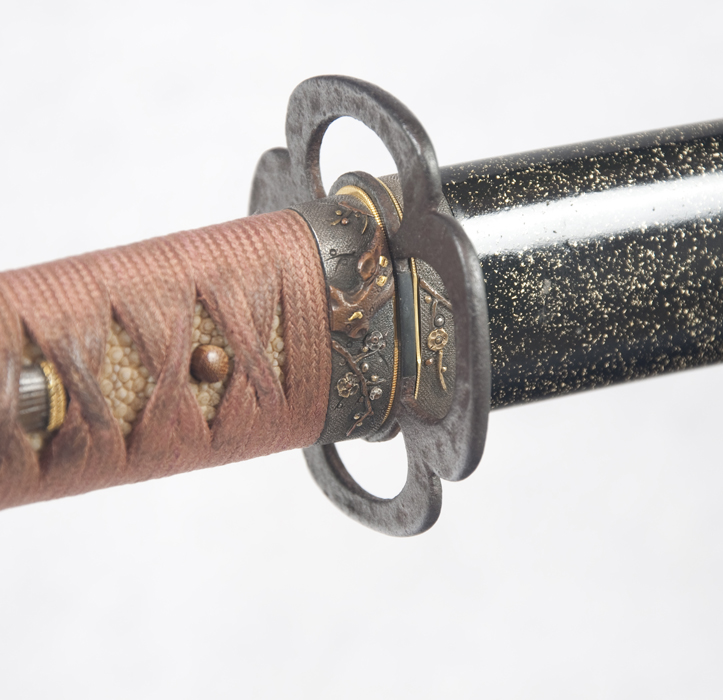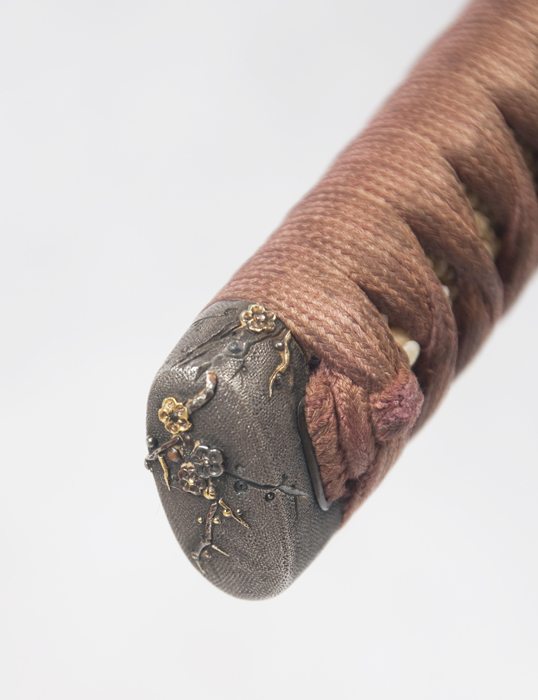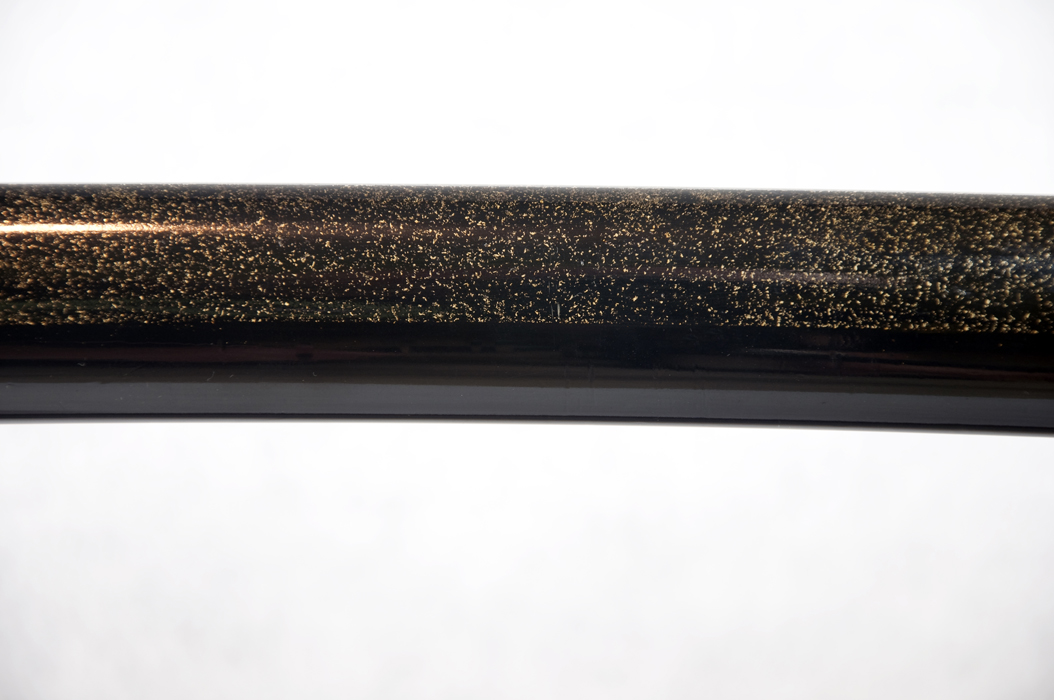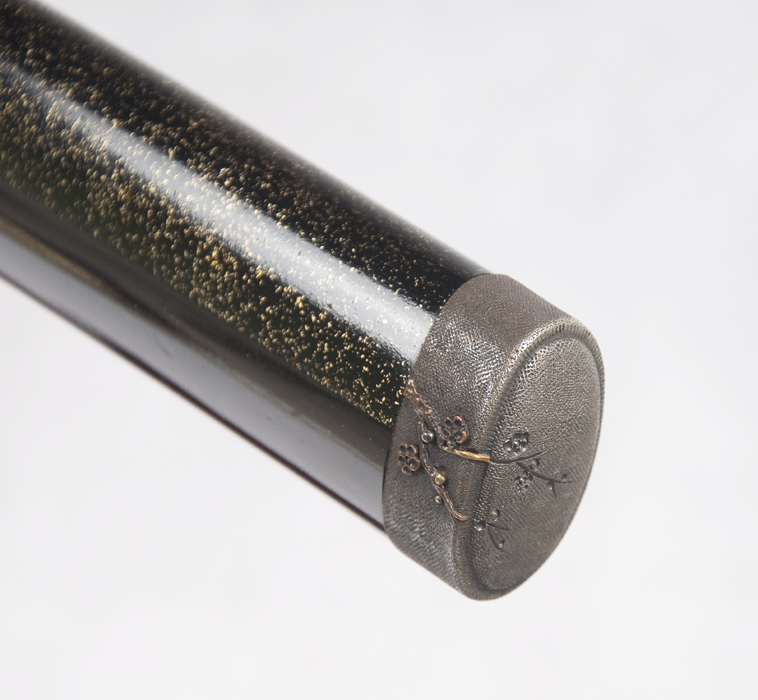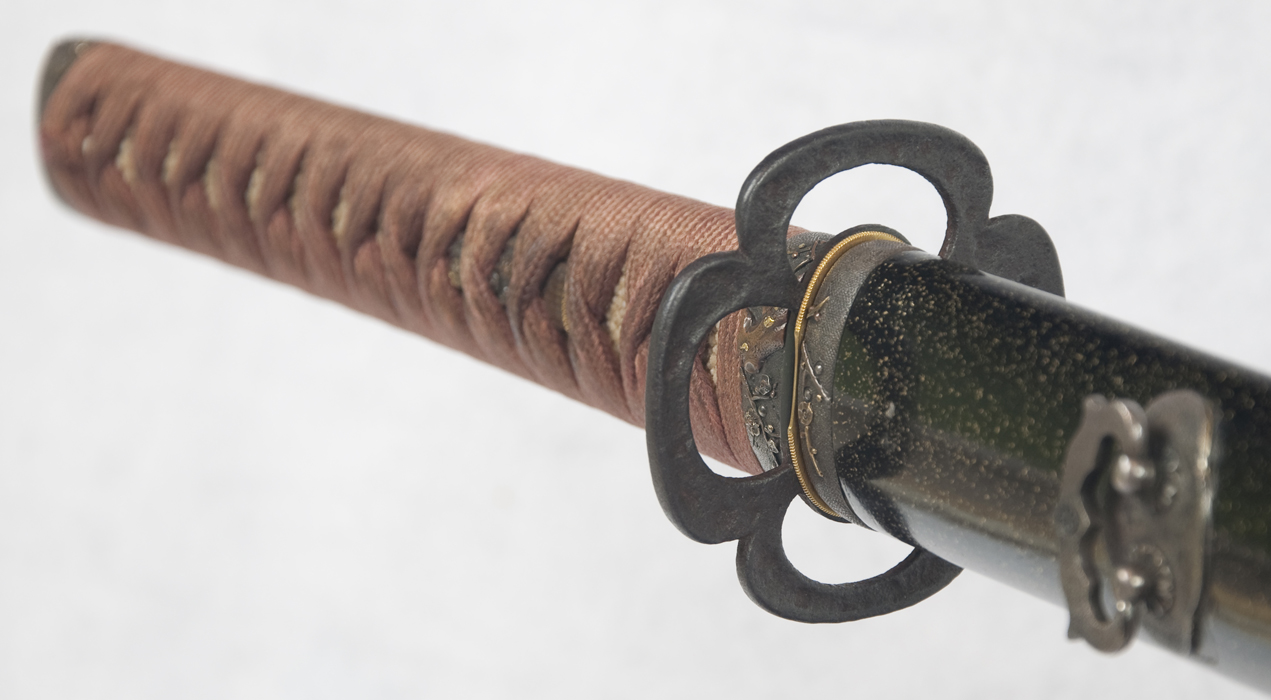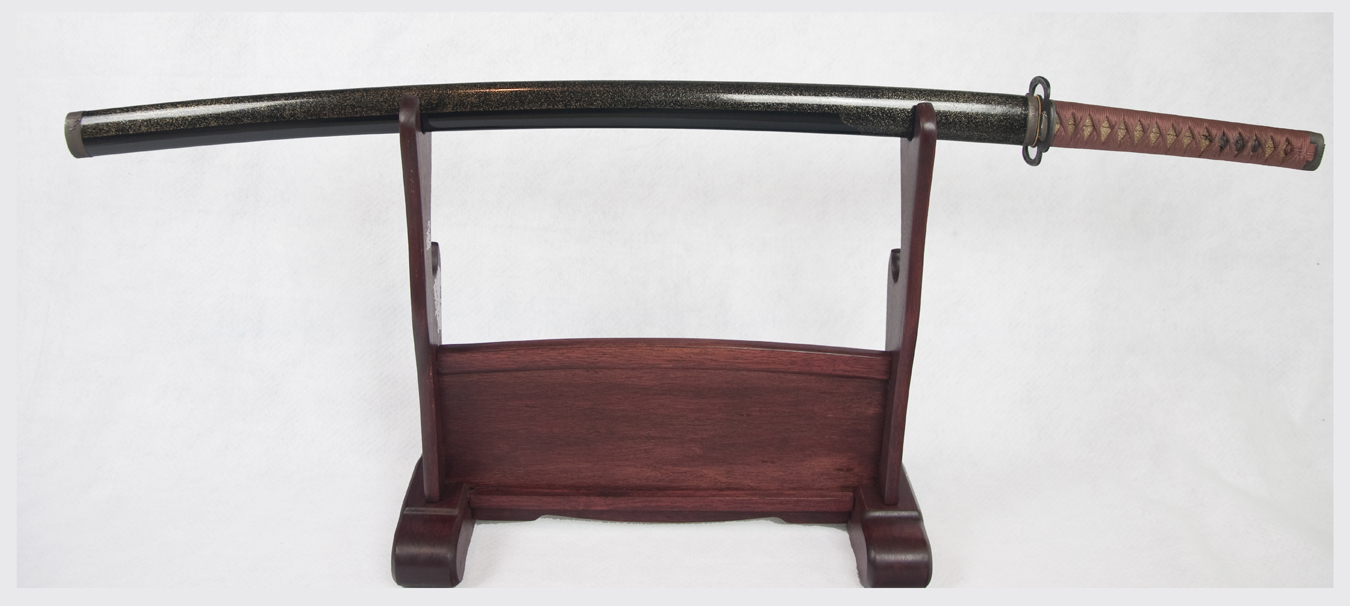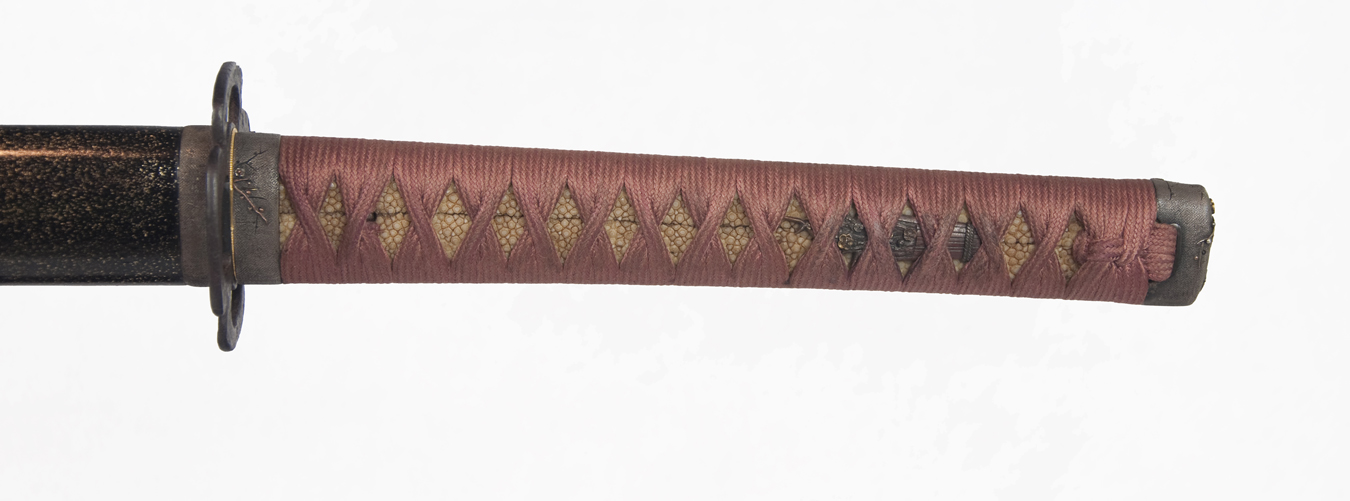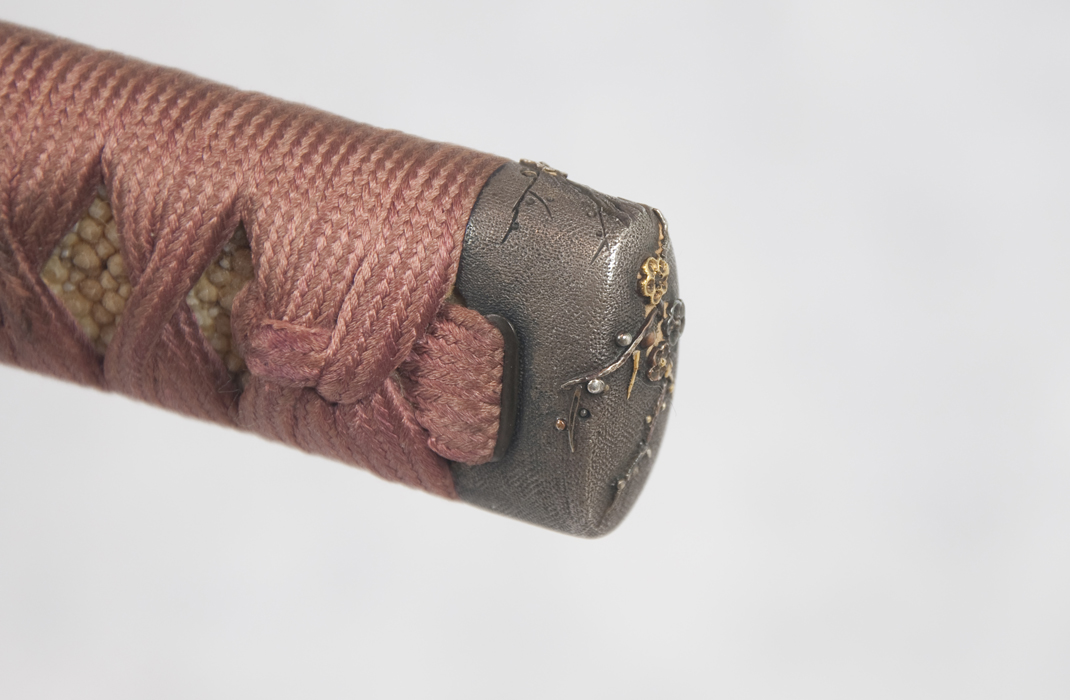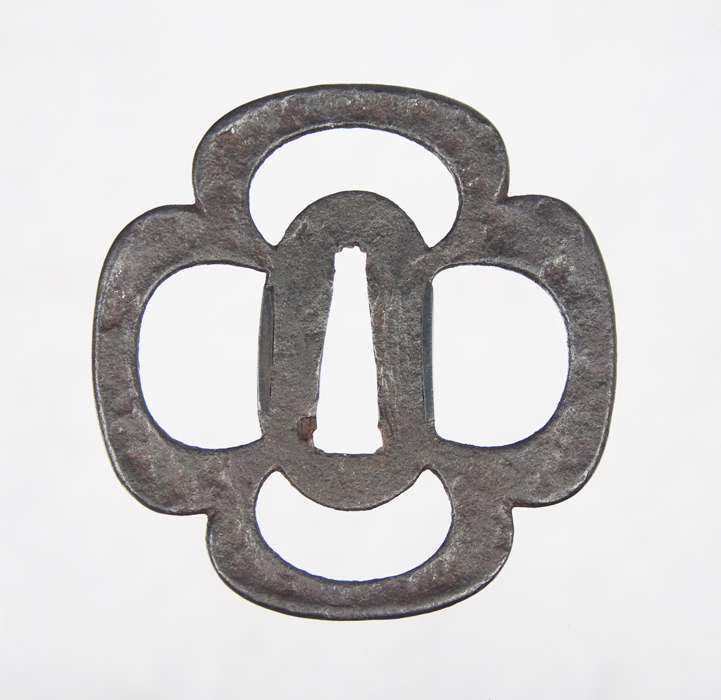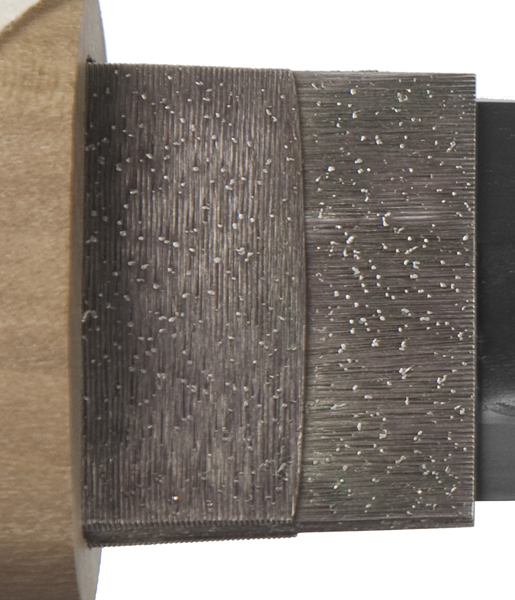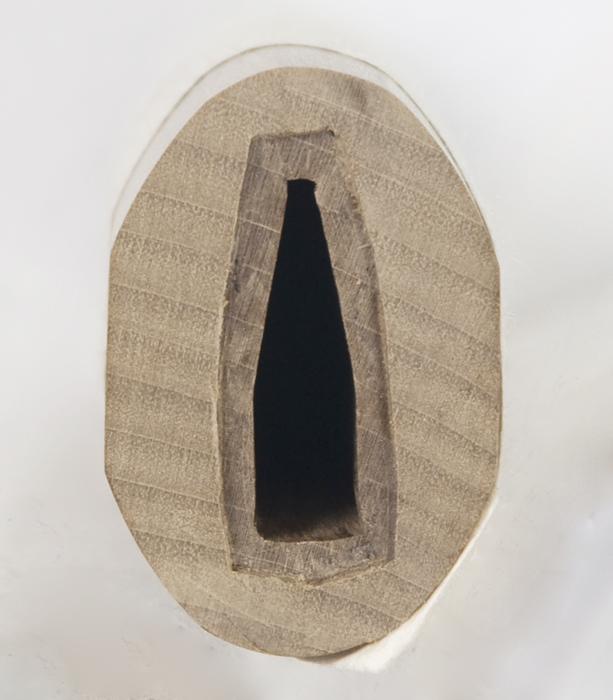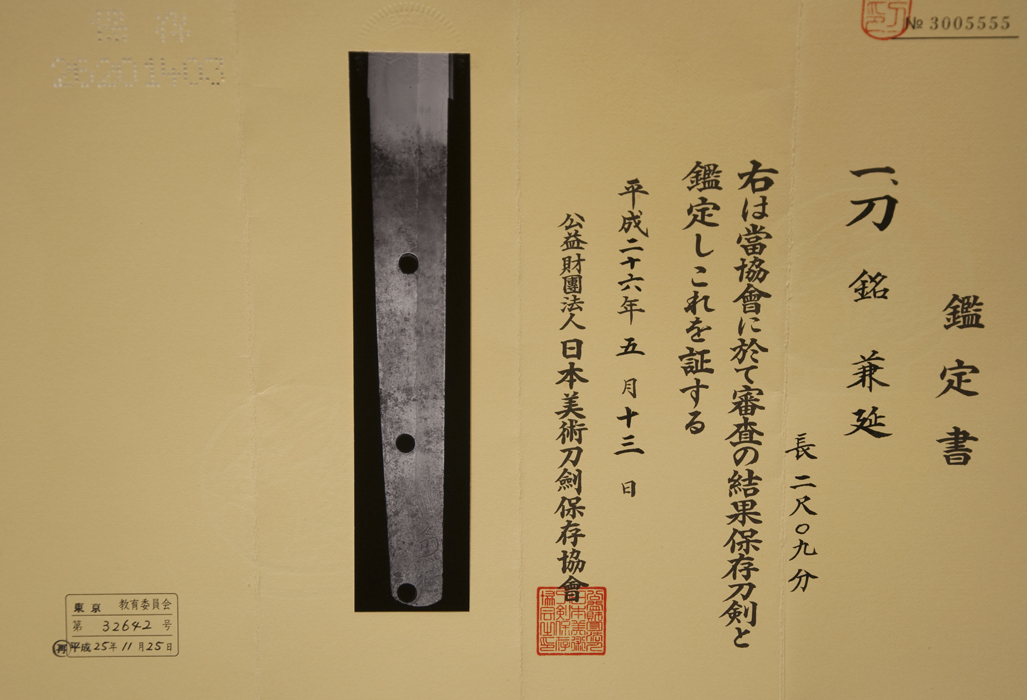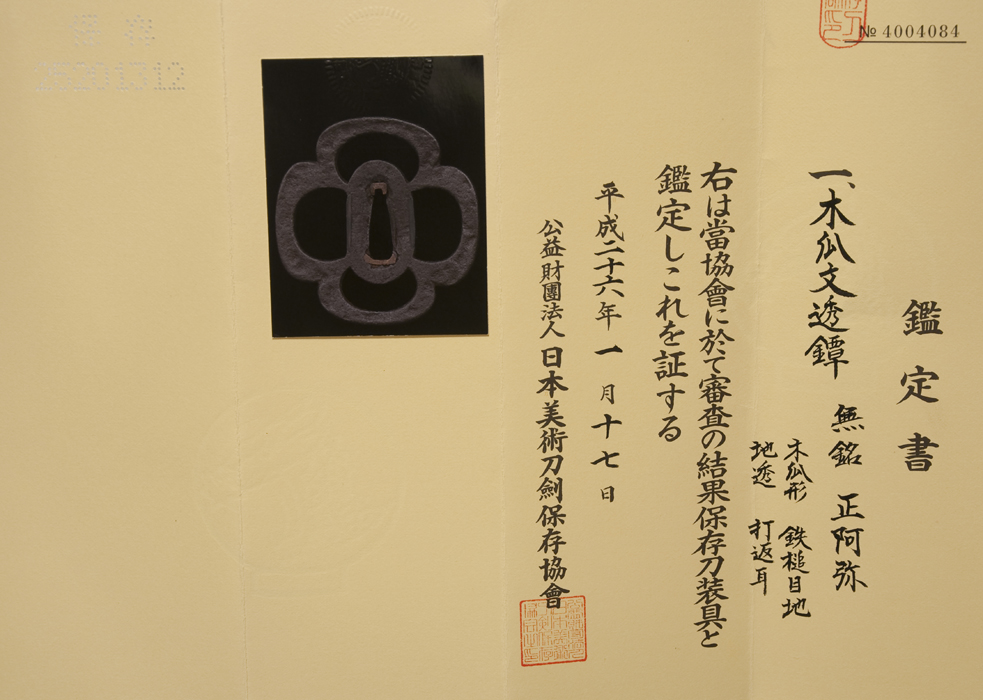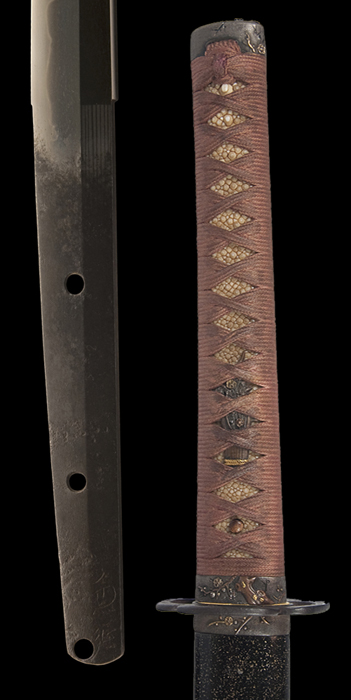|
| |||||||||||||||||||||||||||||||||||||||||||||||
Hamon : Nioi-deki with ample ko-nie. The nioi guchi is bright. Gunome midare with togari and yahazu gunome. There are ashi and yo. Sunagashi and inazuma are also present.
Boshi : Notare komi with a pointed kaeri.
Kitae : Clear and flowing itame mixed with mokume. There is ample ji-nie and chikei. Some of the ji-nie appear as strands. Shirake utsuri is present. Yubashiri can be seen in several areas.
About this sword : Shiga Seki Kanenobu holds an important position in the history of the Japanese sword. He came from the Naoe Shizu line and became the founder of the Shiga Seki branch of Mino. He was active in the Meio period, Circa 1492. He worked in Owari and the origins of the Owari shinto school can be traced back to this koto smith.
This sword is signed and also exhibits all of traits of Shiga Seki Kanenobu. I.E. clear Mino deki with yahazu gunome, nie hataraki and shirake utsuri. The takano-ha yasuri are also his forte. Being a signed work and a text-book example, this is an ideal katana for comparative study and analysis. The quality of this blade is high and it is in full Japanese polish. There are few areas of rough hada as we often see in old blades.
There are two small kiri-komi on the shinogi of this balde. This were caused in a sword fight long ago when this sword was used to parry the attack of another samurai. Kiri-komi are celebrated as proof of the swords quality in battle. They add an an extra dimension of appreciation to our study.
This is accompanied by a katana koshirae. This features matching fuchi kashira, menuki, koiguchi, kurikata and kojiri. All of these elements were made by the same hand. These are shibuichi with nanako ground. The design is that of plum blossoms and buds with the trunk of the tree show on the fuchi. Some of the inaly is missing. The kurikata is an uncommon hinged variant. The tsuba is an iron sukashi moku-gata example. This tsuba has a NBTHK Hozon paper to the Shoami school. The saya is done in kin-hira-makie and black urushi. The tsuka ito is purple silk and shows good age. Finaly, there is a Japanese made tsunagi and a katana bukuro.
This comes with a shira-saya, two storage bags, tsunagi, solid silver habaki, koshirae and two NBTHK Hozon papers. A signed, mounted, polished, papered koto katana by the Jo Saku founder of the Shiga Seki school.
SOLD


